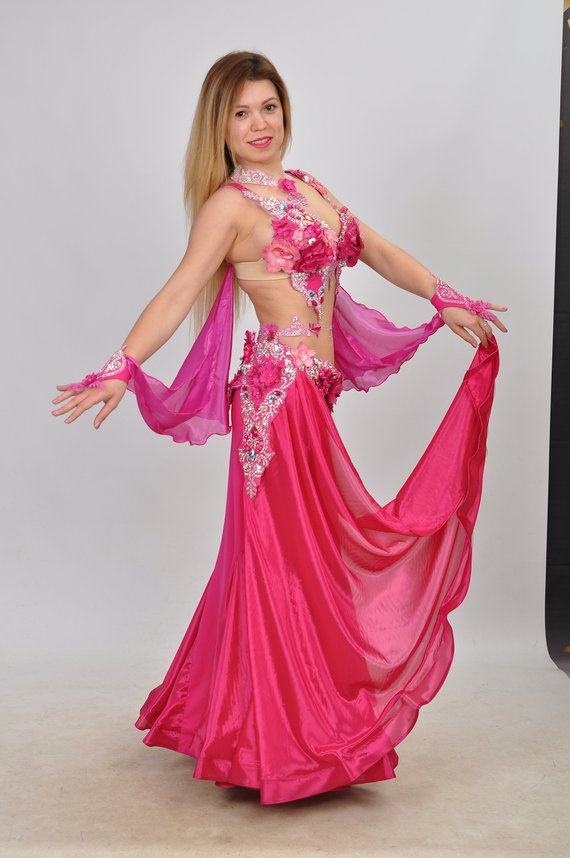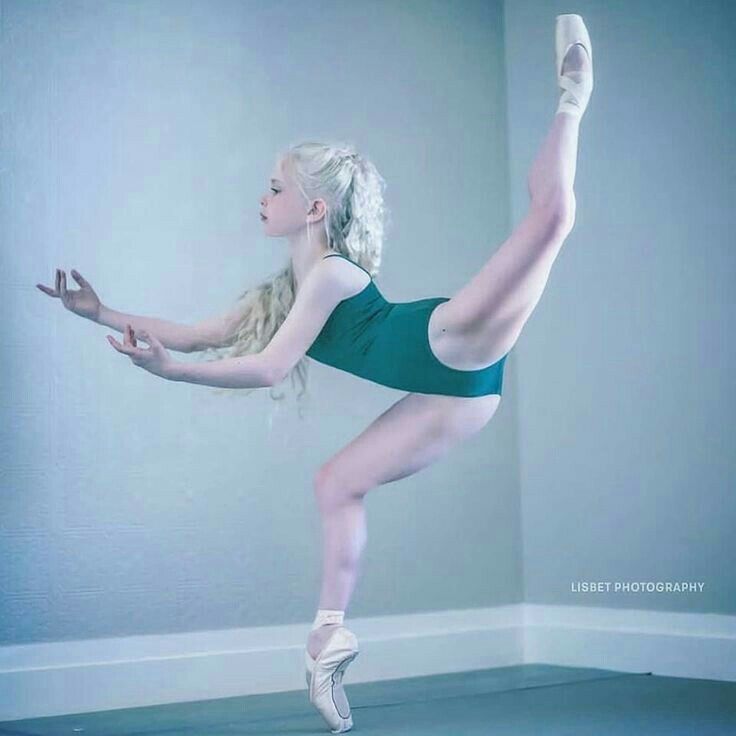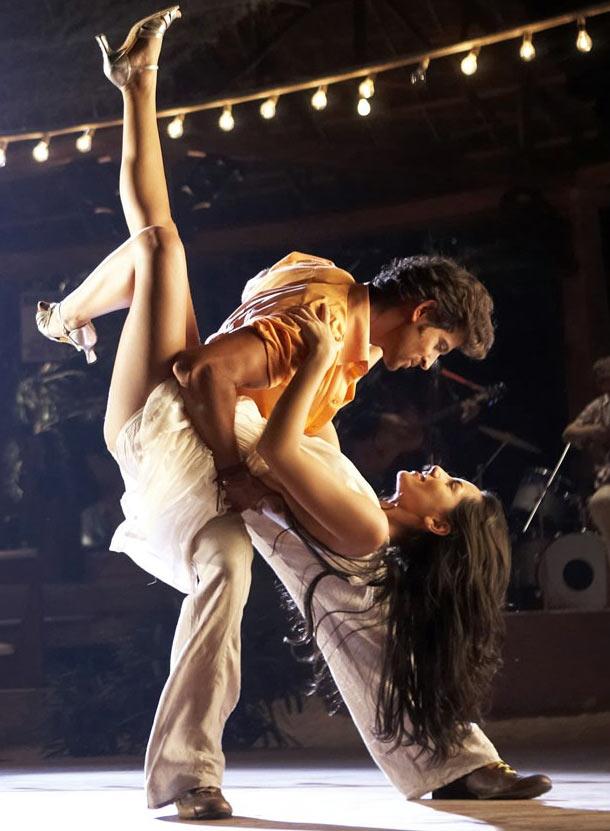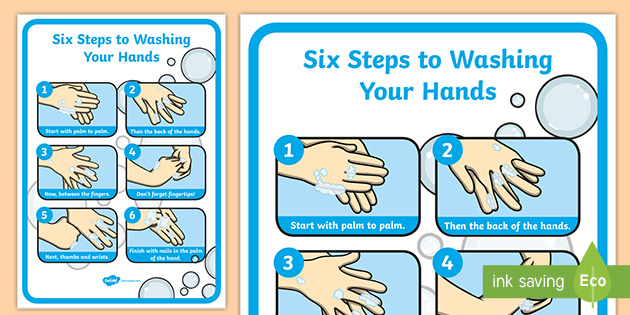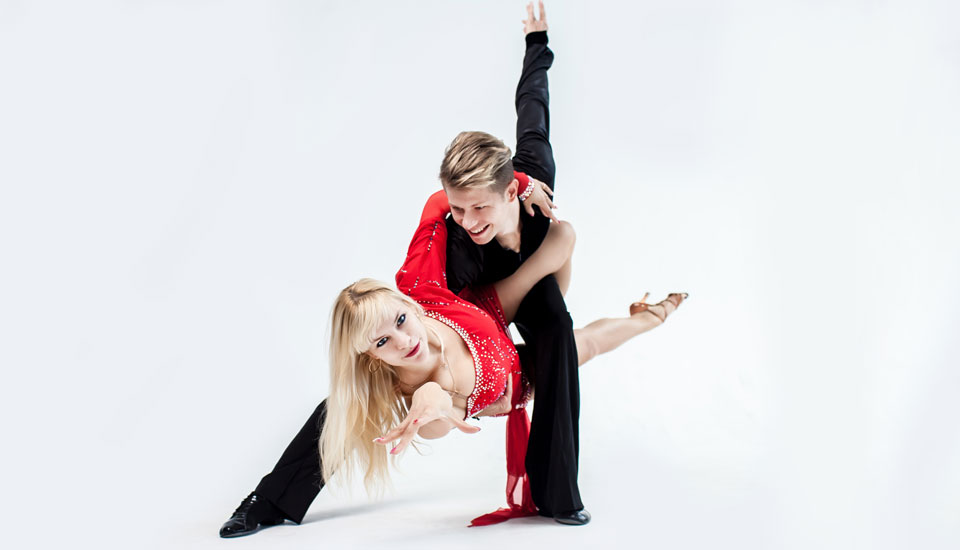How to become better at dancing
How To Become A Better Dancer: 5 Tips -
So you want to know how to become a better dancer?
Here are 5 important tips that will help you improve as a dancer fast:
1. Take Lessons Consistently (You’re not special)
Some people think that they can get good without ever taking any dance lessons…
This is a mistake. Think about everything else you ever learned in your life, did you just wing it? No, you probably took lessons to become good at it. The same goes with dancing. You can take lessons in person or online. For in-person lessons you can do group classes or private lessons. For online lessons you can learn from videos. Check out our online Ballroom dance videos here.
Furthermore, it is important to take the time to find the right dance teacher for your goals, because some are definitely more qualified than others. My recommendation is try out a lesson with several teachers before committing to one specific dance instructor. Read our article on what makes a good dance teacher.
2. Practice Daily At Home/Studio
One of the most important habits you need to adopt is daily consistent practice. No matter how naturally good you are, you need to practice if you want to become a better dancer. Many people assume that just because they take lessons, they don’t need to practice. This could not be further from the truth. It is precisely because you take dance lessons, you need to practice even more to make sure you retain everything you’ve been learning.
Becoming a better dancer requires muscle memory. And muscle memory requires a lot of repetition through practice. So don’t overthink it – simply make some room in your living room, get a mirror and practice the things you worked on at your last lesson/class. Check out our practice guide for Ballroom dancers.
3. Have A Goal
One of the fastest ways to improve your dancing is simply to have a goal to work towards. The goal can be a performance at your studio’s showcase or party.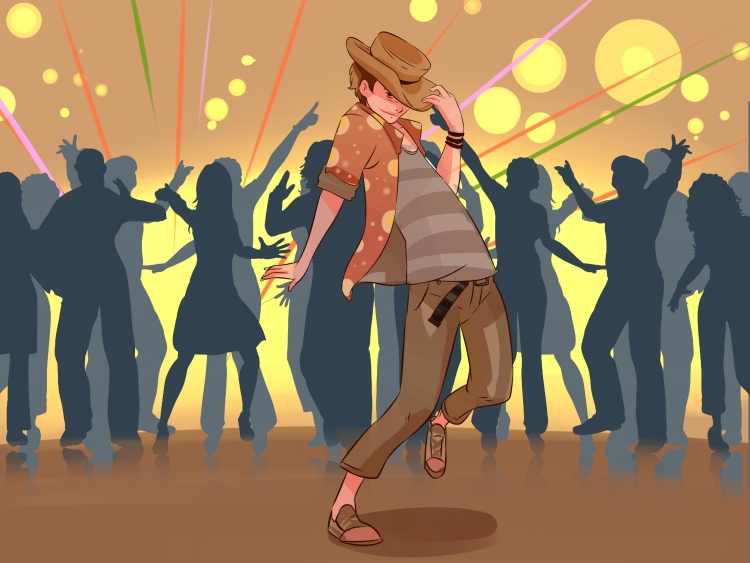 It can also be a dance competition. Even if you don’t want to perform you can still come up with a social dance goal such as “be able to dance comfortably at next month’s party”. Be creative with it as there is no wrong or right goals. The most important thing is to have one and to have a future date that you’re working towards. This will keep you motivated with your daily practice!
It can also be a dance competition. Even if you don’t want to perform you can still come up with a social dance goal such as “be able to dance comfortably at next month’s party”. Be creative with it as there is no wrong or right goals. The most important thing is to have one and to have a future date that you’re working towards. This will keep you motivated with your daily practice!
4. Feel your body
After you’ve learned the mechanics of the steps and routines, you need to make sure that you let your body “Feel” the movements so that all the steps and styling can really sink in to your muscle memory. You don’t want to be stuck in your head when you’re practicing or taking lessons, you need to be in “your body” to retain the dance moves, and progress faster.
After you got it pretty good, just put on the music and try to feel your body going with the music… This will also add enjoyment to your dancing.
5. Keep yourself inspired
It is critical to work on staying inspired and motivated with your getting better in dancing goal. Life gets in the way, so some days you will be more inspired than others… The key is to figure out some specific triggers that can energize you quickly to get back in the groove, whenever you’re not feeling it.
Life gets in the way, so some days you will be more inspired than others… The key is to figure out some specific triggers that can energize you quickly to get back in the groove, whenever you’re not feeling it.
For example, let’s say you don’t feel like going to your dance practice today. What you can do is watch some videos of your favorite dancers performing your favorite choreography on youtube!
That should get you back on track fast.
Watch Video – 5 Tips For Improving As A Dancer:
What do you think? Leave a comment below.
By: Leon Turetsky
Professional dance instructor
Related:
More Dance Articles & Tips
Types of ballroom dances
Styles of Latin Dances
The Ultimate Beginner Dance Guide
Do you want to be a good dancer? Well, you've come to the right place.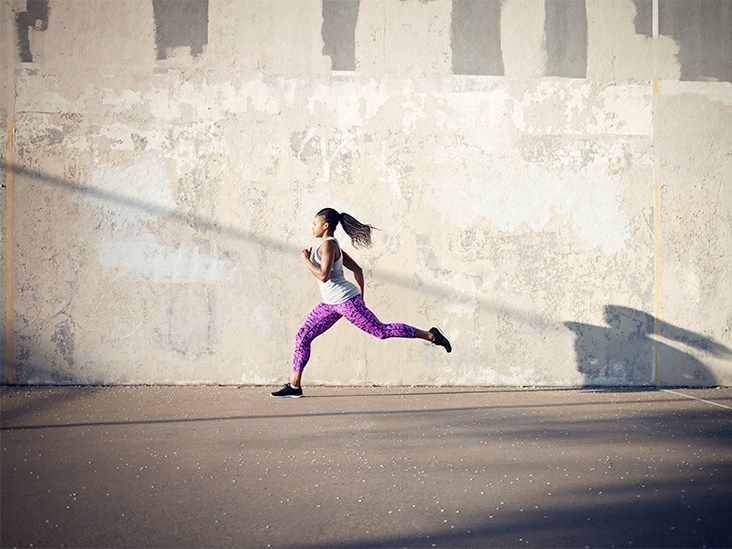
STEEZY has organized this guide to being a good dancer into 16 steps:
- Get inspired
- Warm up and stretch
- Study music
- Learn basics and grooves
- Take dance classes
- Train technique and execution
- Learn to dance with feeling
- Explore through freestyle
- Create choreography
- Find what makes you unique
- Stay growth-minded
- Kill it on stage
- Become a leader
- Collaborate with others
- Share your work
- Take care of your body
Keep reading to see how you can become a good dancer – starting today.
P.S. Ready to start dancing now – like RIGHT NOW? Head on over to STEEZY Studio: the best place to take dance classes online.
We have a 10-day "Intro to Dance" program that's designed to get you moving and grooving, step-by-step, so you can get down in any social setting and lay the foundation for any other type of dancing you wanna do.
Click here to take the first four days for free!
1. Get inspiredWhether it's your first week or 10th year of dancing, the key to being a good dancer is wanting to be a good dancer. Remind yourself why you think dancing is fun or cool in the first place!
This "why" is gonna keep you going in the times you feel defeated or lazy.
Feed your inspiration by watching dance videos, talking to your dance friends, going to dance shows – whatever makes you feel that spark again.
2. Warm up and stretchBefore you start dancing, you need to make sure your body is ready for it! Because trying to dance when your body’s cold and stiff is no fun.
Pulling a muscle and sitting out is even less fun. And getting seriously injured is no fun at all.
And getting seriously injured is no fun at all.
Warming up and stretching before you dance will help you move with wider range of motion and more control, and help prevent injuries.
Follow these diagrams for an easy, quick daily stretch routine: Do These Stretches To Help You Dance Better (And Stay Injury-Free!)
And watch this video on how dancers should and shouldn't stretch:
3. Study musicTraining your body is just one part of becoming a good dancer. Studying music will to give you a much, MUCH better understanding of how dance to it.
Dance is, after all, your body becoming a physical representation of the way that music sounds. Those dancers that you watch that somehow become the music?
They do this by first understanding the sounds mentally. Read this to study dance musicality: What Is Dance Musicality?
And watch this video to learn how to count like a dancer:
4. Learn basics and groovesNarrow down the styles you want to learn, and focus on the foundational movements of that style. Something that all dance styles have in common is a groove.
You probably groove all the time already! Do you bob your head while listening to music in the car? Do you go to the club and sway side to side to the beat?
Those are all grooves! Of course, there are so many different grooves – some have official names and techniques that you can learn.
Bianca Vallar teaches tons of easy Hip-Hop-influenced grooves in her "Intro to Dance" program on STEEZY Studio.
Practicing grooves and getting comfortable with how your body moves will make you look better dancing in class, at a performance, anywhere.
Carlo Darang talks about grooving and loosening up:
5. Take dance classes
Taking classes at a studio is a great way to learn choreography, practice performing, and meet new dancer friends! Not sure how to find one?
Use this guide for How To Take a Dance Class.
And if you're not quite ready to head to an IRL dance studio, try taking online dance classes, right at home.
In this video, professional dancer Alexander Chung shows you how to do just that:
6. Train technique and executionTechniques and foundation are the ABC's of all movements.
Drilling techniques will ingrain that movement into your muscle memory, so you can just do those without thinking.
For example, doing Popping exercises will train your control, power, and understanding of your muscle groups.
Learning House steps will make you more comfortable with your footwork.
Ballet can train, well, pretty much every part of your body.
Whatever the style, focus on the elementary techniques first using this easy-to-follow training method:
7. Learn to move with feelingExecuting movement the way you want has a lot of different parts.
There are the technical parts (which you'll master through learning the basics of a dance style and taking lots of classes) and the artistic parts (which you'll learn by connecting to the music and finding ways to convey the feeling of a sound).
While it's important to start your dance training by learning the more technical building blocks that you'll need to move your body in a way that looks cool, confident, and relaxed, the next phase of your training should be focused on becoming THAT dancer –
The person who walks onto the dance floor or stage and makes EVERYONE think: wow, they don't dance to the music.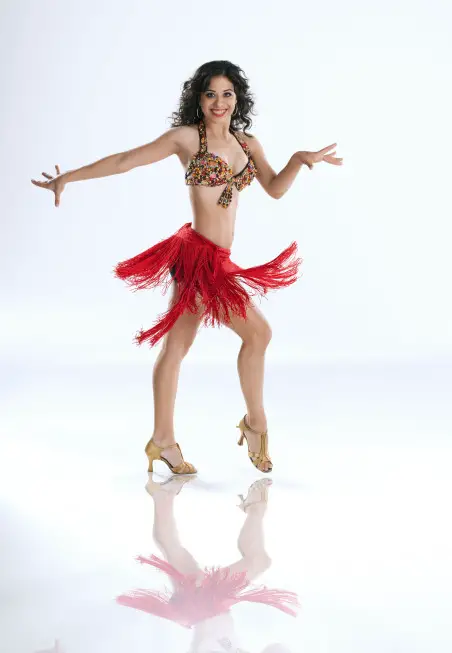 They become the music.
They become the music.
To do this, you'll need to learn all about texture, which is how dancers describe how sounds feel.
For example, the sound of a cymbal being struck might feel sharp and sudden.
Or the sound of a bass note might feel intense and deep, like a boom that reverberates through your chest.
So when you hear a cymbal you might dance sharp and fast.
When you hear a bass, you might use heavy, grounded movements.
Learn more about texture in this video!
8. Explore through freestyle dancingFreestyling is a great way to practice your fundamentals, get in touch with the music, and to explore the ways your body wants to move.
Here's a more comprehensive guide on freestyling: How To Freestyle Dance
If you feel insecure about your freestyling, then watch this video:
9. Create choreographyMaking choreography is a great way to challenge yourself as a dancer.
You'll be pushed to come up with creative new moves, freestyle, and pay attention to music in ways you never did before.
Never made a piece before? We got you: How To Choreograph A Dance In 6 Simple Steps
Watch this video when you get stuck:
10. Find what makes you uniqueThe most captivating dancers are the ones who have found their own voice and learned to use it.
Think about your music tastes, develop your natural groove, embrace those weird poses your body comes up with.
Your unique style won’t just make you a better dancer, it’ll make you the best dancer you can be.
Don't pigeon-hole yourself into a "type" of dancer. Let yourself explore all different kinds of dance, let yourself fail, let yourself keep striving for growth.
Read tips on becoming growth-focused! 5 Ways Your MINDSET Is Holding You Back As A Dancer (And How To Change It!)
If you’re constantly growing, even in baby steps, you’ll soon be at a level you never thought possible.
So keep growing, keep changing, keep evolving – one day at a time.
Scared of judgement from others? Watch this video:
12. Kill it on stageDance is a performance art – so being a great dancer means that you know how to kill it on stage.
The next time you're at a show or competition, or filming a video, bring out your best performance.
Try these tips: 7 Easy Ways To Kill It On Stage
Make sure all eyes are on you.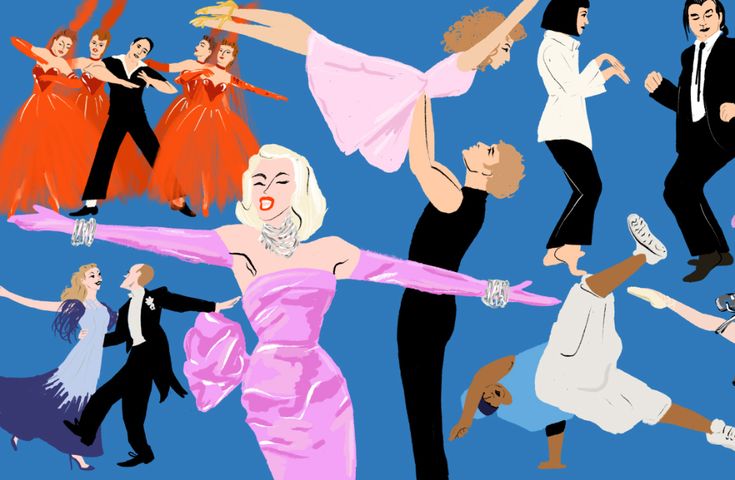
Read: How To Dance Bigger, Stronger, And More Full Out
13. Become a leaderIf you want a push yourself even further, then consider being a captain or director of your dance team.
Not only will being a leader teach you management and communication skills, it's an opportunity to give back to a team and community that gives you so many opportunities.
It all starts with the 'why.'
Write your team's mission statement the help of the pioneers: Dance Leadership Tools From Arnel Calvario And Anna Sarao
14. Collaborate with othersWe’re blessed to be surrounded by talented, passionate, like-minded individuals in our community.
Share the love by collaborating with other dancers – this can mean working together to create a piece, host a workshop, whatever!
Tips on joint choreography creation! How To Collab With Someone To Make A Piece
15. Share your workIt's not about the video.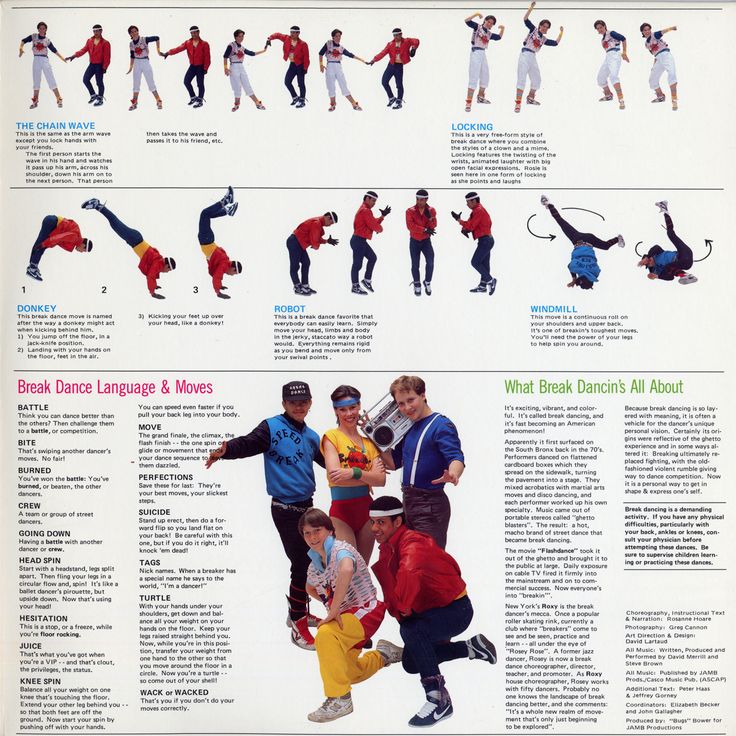 But if you worked hard on a piece or enjoyed teaching a class, do share! Your work can inspire someone else, and push you to create better.
But if you worked hard on a piece or enjoyed teaching a class, do share! Your work can inspire someone else, and push you to create better.
Though our bodies are the very tool we use for dance, many of us neglect it.
A healthy, nourished, hydrated body will perform much better than a weak, stiff, dehydrated one in any dance setting.
Be a good dancer by keeping your body in optimal, dance-ready condition.
Do these things to be in tip-top shape: How To Take Care Of Your Body As A Dancer
Being a good dancer is a journey that looks different for everyone. Take the tips you need in yours to make your growth more focused and efficient!
We hope this helped you understand how to be a good dancer.
5 tips to help you make progress in dancing
Is it possible to quickly improve your dancing skills with a few simple and effective steps? Yes! Read our tips to improve your dance technique.
Whether you're a beginner or an experienced dancer, whether you're into ballet, modern jazz, hip hop, or any other style, these 5 tips will help you reach your peak.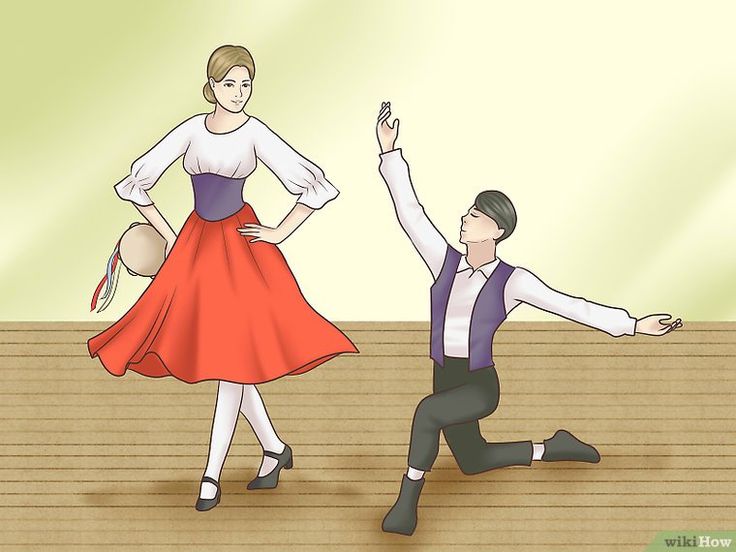
Would you like to change your dance costume while keeping the same clothes? This can be done with a single accessory or piece of clothing - a favorite item that can be worn in many ways.
Depending on your style of dancing or how you feel at the moment, you can wear this piece however you want right now to give yourself a whole new look.
Your dancewear is part of your expression, so get creative by choosing an outfit that reflects your personality. Mix styles and develop your creativity.
What dancer has not had difficulty maintaining balance during the batman retreat or when performing a pirouette without a somersault?
To keep a good balance, remember this: when you move into a half-pointe position, automatically think about getting taller, as if someone is pulling you up. Press down on the ground with the foot that touches the floor to keep a firm footing. Also pay attention to the muscles of the core: tighten the stomach, imagining that the navel should touch the spine, and tighten the gluteal muscles.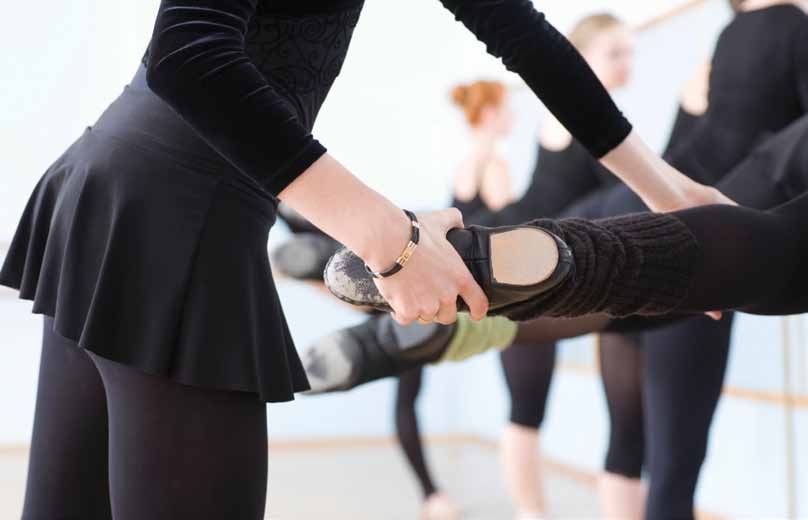
Dancing is not always easy to gracefully express yourself and see your body moving smoothly and elegantly. However, viewers often pay attention to the upper half of the dancer's body. To become more graceful, try to move in a relaxed way and keep a natural expression on your face. No one should notice the slightest sign of effort in your eyes!
Free your head and let it move, don't tense up. Do not spread or close your fingers as if you are holding something. A good dancer should have "light" hands. Your fingers should be controlled but relaxed (imagine water dripping from your fingertips and focus on the sensation).
Watch how you hold your hand: from the shoulder blades to the very nails. Keep your elbow from "falling" by taking care to support your wrist. Good support and resistance will help you shape curves that are smooth and elegant!
Flexibility is not required in dance, but it remains a highly sought-after characteristic for many dancers nonetheless. If it is not an innate trait, it can be developed gradually, with patience and care, given the capabilities of your body.
If it is not an innate trait, it can be developed gradually, with patience and care, given the capabilities of your body.
To make your body more flexible, we recommend a special exercise - splits . It is recommended to perform it only under the supervision of trainer ! Find a trainer at All Do Sport to train efficiently and safely.
First, warm up for 10 minutes, alternating several basic exercises. Sit on the floor with your legs together in a butterfly position and do a few rolls on your back. Then warm up your legs with a few exercises, do a series of jumps and a few deep lunges, and move on to the next:
- Execution: lie on your back and put your feet on the wall. Use your hands to move as close to the wall as possible. Touch the wall with your buttocks. Straighten your legs up and stretch your toes, keeping your feet and knees together. Legs and buttocks should rest on the wall.
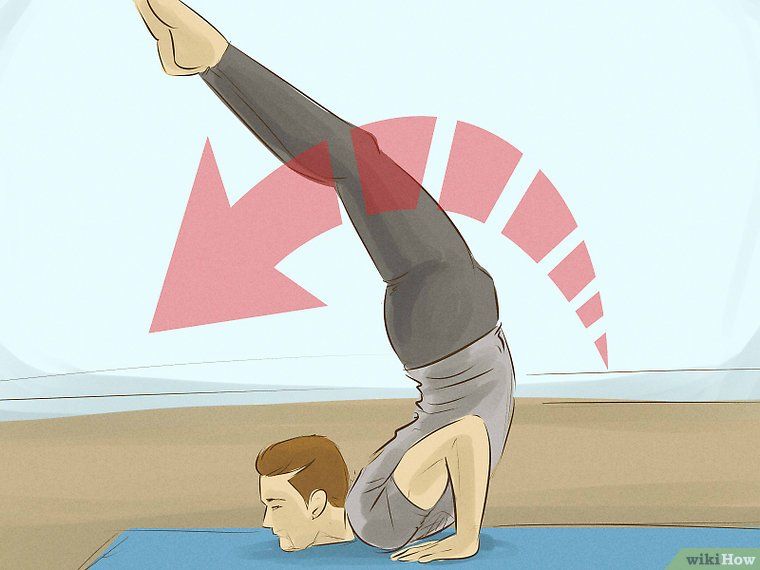 Start slowly spreading your legs apart. Lower them down to the most extreme position. Fix this position and try to relax, allowing gravity to push your legs towards the floor. Lightly press your hands on your feet. Gradually open your legs wider and wider, stretching your muscles.
Start slowly spreading your legs apart. Lower them down to the most extreme position. Fix this position and try to relax, allowing gravity to push your legs towards the floor. Lightly press your hands on your feet. Gradually open your legs wider and wider, stretching your muscles. - Breathing: inhale deeply and exhale slowly throughout the exercise to relax and oxygenate your muscles. This will gradually help your body become more flexible.
- Safety tips: make sure you keep your buttocks firmly against the wall and your back against the floor throughout the exercise. Pull in your stomach and lower your legs as low as possible, but not with force!
Do this exercise once every 15 minutes.
If you are already flexible enough, put on ankle weights such as Gym Weight Domyos. They will increase muscle tension and add extra inches to your stretch!
Before the performance, it is important to take time for yourself and relax.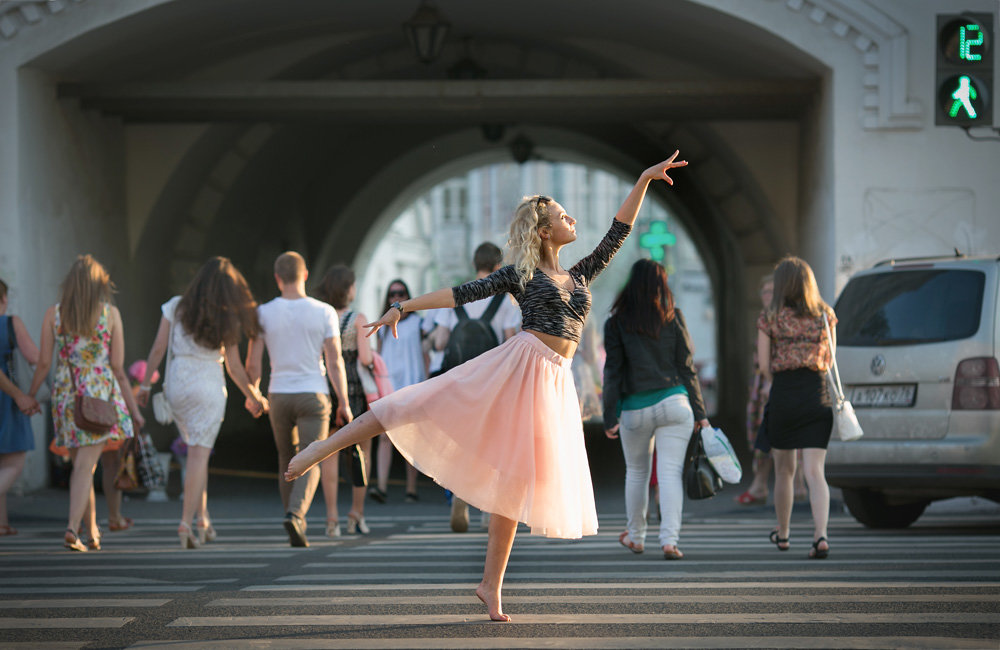 Every dancer has their own set of tips for overcoming fear on stage. Do you want to know the proven way? Learn to relax through conscious and deep belly breathing.
Every dancer has their own set of tips for overcoming fear on stage. Do you want to know the proven way? Learn to relax through conscious and deep belly breathing.
Really deep breathing brings a sense of calm and awakens your mental powers. It also helps to better oxygenate your muscles. To feel good about your body and mind, do this relaxation exercise while preparing for the performance and on the day of the event itself:
- Sit with your back against a wall or lie on your back
- Breathe in through your nose, slowly and deeply
- Place one hand on your belly and exhale through your mouth (you can gently press on your belly with your hand)
- Then inhale through the nose, expanding only the belly (the belly should rise)
- Exhale slowly through your mouth. Your exhalation should be slower than your inhalation.
- Repeat the whole sequence three times
Now you know 5 secrets that will help you improve your dancing skills or just feel good in your body before going on stage. On the day of your performance, forget about everything else and focus on just one thing - the pleasure of dancing! Mamita Dance0003
On the day of your performance, forget about everything else and focus on just one thing - the pleasure of dancing! Mamita Dance0003
Author: Pavel Sobiray
psychologist, teacher of salsa and tango
At the start, you always want to get a quick result. When it doesn't happen, the hypothesis arises that everything takes time. After a conditionally acceptable time, humility comes to mastering pair dances, which, perhaps, is not given, and I will just do what I learned somehow.
This is the most common story of those who believe that the fact of attending pair dance classes is enough to learn how to dance.
Absolutely not. If you want to really dance well, you have to make an effort outside of the dance class. A good teacher will definitely be needed, but the initiative should be on your side.
1. Listen to music
The most common and accessible advice that is given already in the first lessons. And it definitely works. Music creates a certain atmosphere of the dance and intuitively you want to move to it. It doesn't matter where you listen to music - in the car, on headphones while walking or doing household chores.
And it definitely works. Music creates a certain atmosphere of the dance and intuitively you want to move to it. It doesn't matter where you listen to music - in the car, on headphones while walking or doing household chores.
An addition that will help you dance better is your active participation in the music. Sing along, dance or simply beat musical accents with any free parts of the body. In the subway, for example, it is enough to tap out bright moments with your fingers, in the car to sing along with sounds, and at home you can jump for pleasure.
2. Watch videos of good dancers
It's complicated, but also obvious. It’s more difficult, because without recommendations from more experienced dancers, unfortunately, it’s not so easy to find a good quality video on the net (I mean not the resolution quality, but the content itself).
Meaningful video viewing is about building an understanding of HOW dancers make a particular impression on a partner or viewer. Technology is at the heart of everything. Understanding how the pros do it is a big step forward.
Technology is at the heart of everything. Understanding how the pros do it is a big step forward.
It is important to distinguish a show from a disco dance, a staged performance from an improvisation, a stylized dance from an authentic one, etc. Ask for recommendations and dance teachers will always throw off a couple of videos of worthy landmarks.
Tango Z. Showreel.
Online modern tango courses
Tango nuevo is the most advanced version of tango. We can quickly learn to dance from zero to a steep level.
| View details |
3. Dance in salsatecas/milongas/discotheques
A very delicate moment when it is worth coming to the first party. From a technical point of view, most students in 1-3 months have a sufficient set of figures and techniques to come and dance calmly. Psychologically, the same moment can be stretched out for an indefinite time. After all, it is imperative to “not lose face”, “learn more figures” and be sure what to do in case “there is an unfamiliar movement”.
In fact, the partygoers don't really care (except for a small layer of non-professional teachers who want to help inexperienced dancers by treating them as customers in the future). It is important to come and try dancing after a month of classes. You can only with friends or guys from your group. This will be enough to feel the adrenaline and inspiration from the dance.
4. Dance with partners or partners not of your level
The conventional wisdom that you need to practice in groups of your level does not stand up to the test of experience. Perhaps now your eyes widened in surprise, and you want to meaningfully read the phrase again. Yes, you saw everything correctly: when you dance with a partner of your level, you don’t grow anywhere.
It's important to understand that not only does it work one way and you have to dance with cooler dancers, but it works even more effectively the other way. It is no coincidence that teaching pair dances dramatically raises the level of the teacher himself.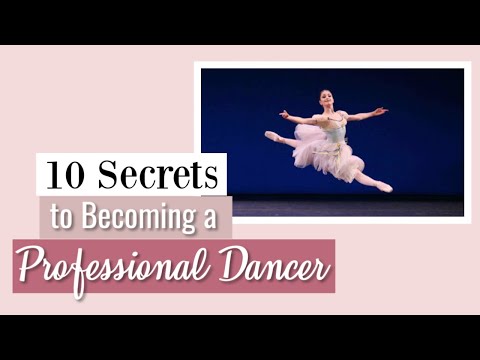 You have an endless stream of very beginner dancers.
You have an endless stream of very beginner dancers.
How it works. A more experienced partner needs to be "stretched". It's easy and obvious. With beginners, you need to take more initiative on yourself, see the general pattern of the dance more widely, turn on and insure more, try to be an example and be more careful. The quality of interaction begins to grow significantly. And wonderful partners too.
Dancing with partners of your level doesn't make you grow. Dance with beginners and more advanced dancers
Dominican Bachata Women's Style Online Course
Want to learn how to hypnotize those around you with the most appetizing part of your body? On the course we will tell you all the secrets.
| Interesting |
5. Learn to dance for a partner and for a partner
Turks and Argentines are one of the best partners in the world. In Russia, partners are highly valued. Why? The answer is simple. In Argentina and Turkey, it is not questionable for men to ask another man to lead in one piece or another and give feedback on the quality of the lead. For them, it will be a great shame to hear moralizing from a partner, or even more so to be known in the community as an insecure partner.
Why? The answer is simple. In Argentina and Turkey, it is not questionable for men to ask another man to lead in one piece or another and give feedback on the quality of the lead. For them, it will be a great shame to hear moralizing from a partner, or even more so to be known in the community as an insecure partner.
In Russia, due to the constant, often far-fetched, opinion that there are more women in pair dances, partners calmly get up and study their partner's part. Such partners then grow into very cool dancers and teachers. In no case do this at parties, only in class. Here we are talking only about the learning strategy. At parties, be yourself.
6. Do not memorize the links
Always try to look deeper and understand the through principle and idea of movement. Understanding what and how is done will make it possible to independently generate any sequences and chips.
Human memory is limited and there will always be a moment when something will escape and your repertoire will be limited by the size of RAM.
In Argentine tango, for example, there are seven levels of movement construction that, when mastered, will allow you to make millions of combinations. And how many dance sequences can you really remember? In rueda, more than 150 figures dance in a rare circle. It's hard to keep more in mind.
7. Develop your body
Many years of experience in teaching couple dance shows that as soon as everyone pairs up in a class, any progress in individual style ends. But it is the individual style that distinguishes everyone at the disco: partners change, and style is always with you.
The body as the main instrument of dance must be very plastic, responsive and emotional. Surprisingly, not all pair dance schools have a general physical warm-up. It is vital to tune the body and understand how it works.
You can always train extra and concentrate more on the basic steps, as their true value is as body work. The sequence of steps is, in fact, the simplest thing that can be in pair dancing. The quality of individual performance determines the craftsmanship.
The quality of individual performance determines the craftsmanship.
8. Try on the images of inspiring dancers
A psychological life hack for those who have already mastered the steps, but still feel that there is not enough brightness and drive. Most are terribly afraid of being someone else's "clone". Here the action is the same as under the influence of hypnosis - the more you resist, the more you plunge into an altered state of consciousness.
With a high degree of probability, you are already dancing like someone else's "clone". A meaningful fitting of someone else's image is that you mentally take the image of the one who inspires you (inspiration is critical in this case) and "put on" yourself. Then you start dancing and trying to feel in general how it is to be in a state, for example, of the best partner or the sexiest partner in a disco. This is much more difficult than it seems. But it works extremely efficiently.
9.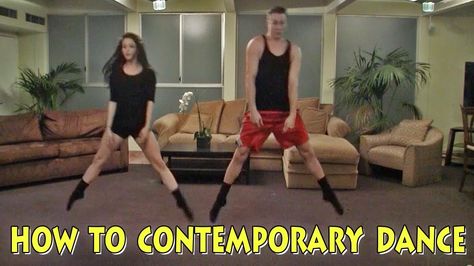 Dance to offbeat music
Dance to offbeat music
Habitual rhythms keep you tight. Tango salon or speedy timba leave little room for experimentation and fantasy. Pattern dancing is always noticeable and is reserved for beginners.
The truly new is born outside of the usual. Look for places to experiment. If there is no place, organize self-training. The main thing is not to get carried away, because music determines the style. We bring something new to pair dances, rather than trying to change them.
Search, improvise, do not be afraid to go beyond, develop in different directions, be inspired by music atypical for the style
10. Try your hand at basic dance directions
dances exist according to their own non-choreographic laws.
This is the deepest delusion, which has turned into a ceiling for the qualitative development of partner dances. After all, all professional dancers, for example, in salsa or bachata, build their ideas on the basic choreographic principles.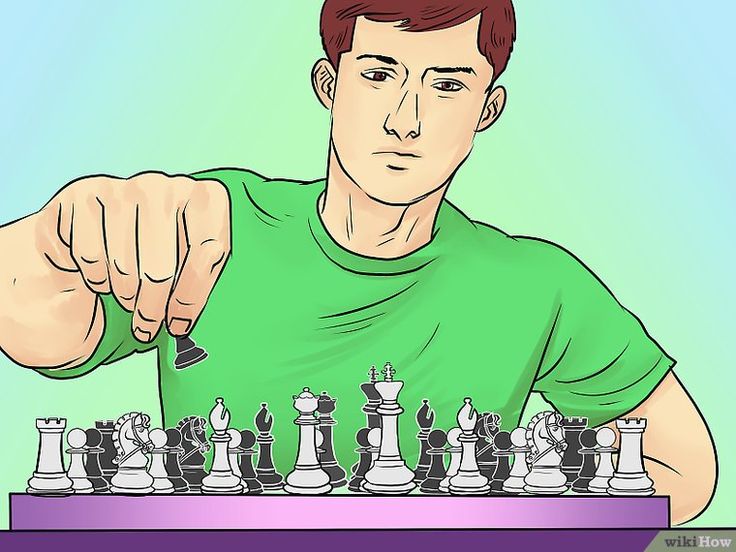
Do not think that choreography is only applicable on stage. Any meaningful movement of the body can be choreographic. In general, try classical or modern choreography. Basically, hip-hop can work too.
11. Look for battle sensations
Pair dances return us to an active position of manifestation of our body. As in the days of our ancient ancestors, we impress the members of the opposite sex by how dexterous, hardy, sexy, etc. we are. Modern laws of the jungle in the entourage of large cities.
If you look around the dance floor, it becomes clear that the majority are clearly herbivores (not in the sense of vegetarians, but in relation to those around them). I am sure that predators are always more interesting in terms of the attractiveness of the image - try to find a counterbalance among herbivores, for example, a cat woman or a lion man.
The conversation is about an internal position, not about aggressiveness. Lability and lack of control are inherent in adolescents, and not in adult self-sufficient people.
Accordingly, even a training or friendly battle gives, on the one hand, practical skills - to make a bright sequence of movements, bring an idea to a climax, show a spectacular feature, on the other hand, develops the psychological basis of the dance - self-confidence, resistance to extraneous attention, self-control and self-control in complex elements.
12. Communicate with professionals
The environment shapes the internal position. Basically, real passionaries of the dance community are ready to openly talk, discuss and support the development of dance in every possible way. Universal principles and the ideas they articulate have a much longer and more practical perspective than meets the eye.
Accept that, for example, behind the words "listen to your partner" is not only a beautiful metaphor, but also a practical skill to literally listen to your partner.





